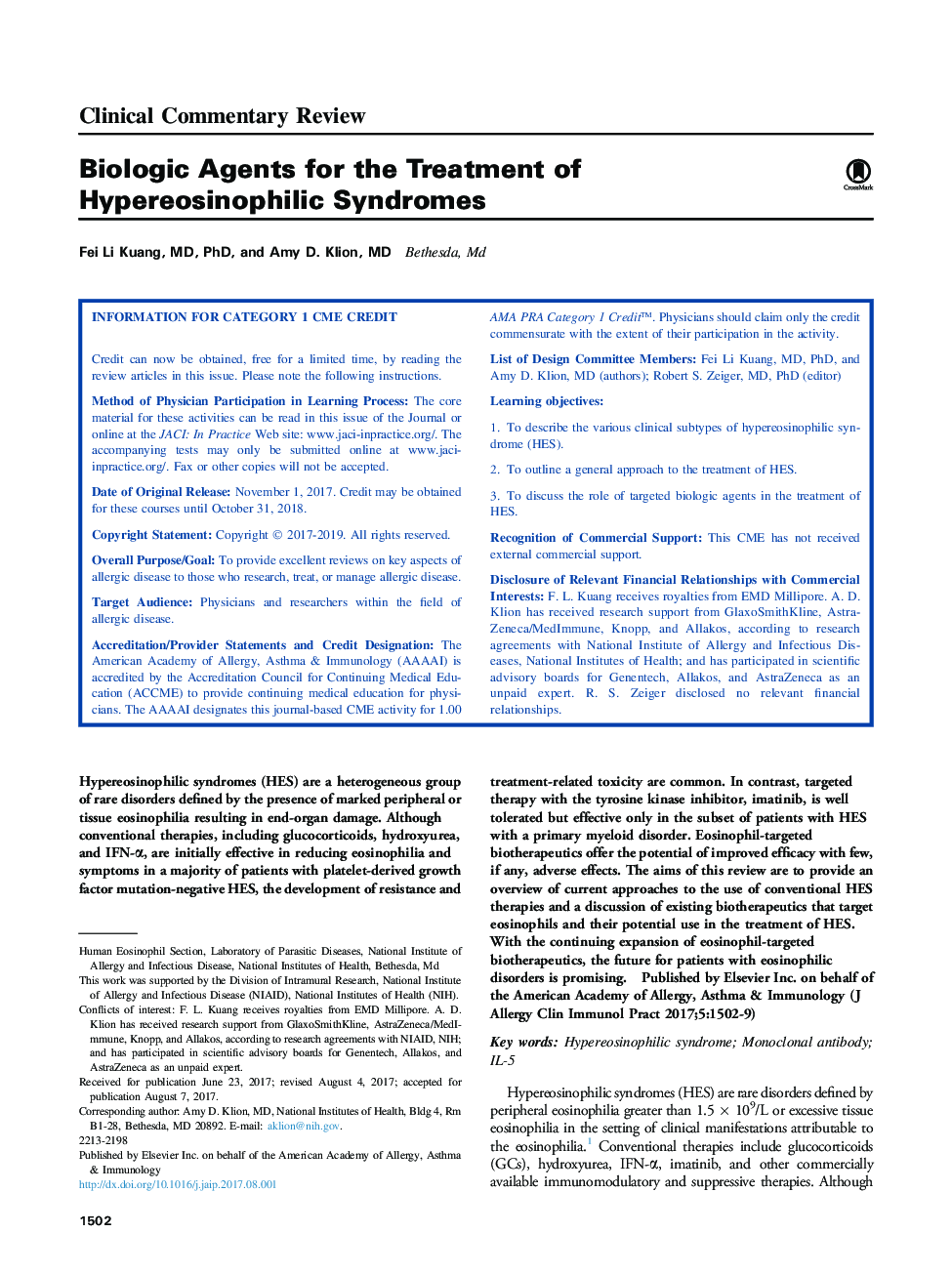| کد مقاله | کد نشریه | سال انتشار | مقاله انگلیسی | نسخه تمام متن |
|---|---|---|---|---|
| 8714630 | 1587119 | 2017 | 8 صفحه PDF | دانلود رایگان |
عنوان انگلیسی مقاله ISI
Biologic Agents for the Treatment of Hypereosinophilic Syndromes
ترجمه فارسی عنوان
عوامل بیولوژیک برای درمان سندرم هیپرئوزینوفیلیک
دانلود مقاله + سفارش ترجمه
دانلود مقاله ISI انگلیسی
رایگان برای ایرانیان
کلمات کلیدی
Lymphocytic variant HESL-HESEGIDFDAEosinophilic gastrointestinal disorderIL-5RIL-5EoEAECEGPAPDGFRIL-5 receptorMonoclonal antibody - آنتی بادی مونوکلونالHES - او هستabsolute eosinophil count - تعداد ائوزینوفیل مطلقintravenously - داخل وریدیsubcutaneously - زیر جلدیFood and Drug Administration - سازمان غذا و داروHypereosinophilic syndrome - سندرم HypereosinophilicSiglec - سیگلکHypereosinophilia - هیپرئوسینوفیلیاeosinophilic granulomatosis with polyangiitis - گرانولوماتوز eosinophilic با polyangiitisGlucocorticoid - گلوکوکورتیکوئیدهاplatelet-derived growth factor receptor - گیرنده عامل فاکتور رشد یافته پلاکتeosinophilic esophagitis - یوزافاگیت ائوزینوفیل
موضوعات مرتبط
علوم زیستی و بیوفناوری
ایمنی شناسی و میکروب شناسی
ایمونولوژی
چکیده انگلیسی
Hypereosinophilic syndromes (HES) are a heterogeneous group of rare disorders defined by the presence of marked peripheral or tissue eosinophilia resulting in end-organ damage. Although conventional therapies, including glucocorticoids, hydroxyurea, and IFN-α, are initially effective in reducing eosinophilia and symptoms in a majority of patients with platelet-derived growth factor mutation-negative HES, the development of resistance and treatment-related toxicity are common. In contrast, targeted therapy with the tyrosine kinase inhibitor, imatinib, is well tolerated but effective only in the subset of patients with HES with a primary myeloid disorder. Eosinophil-targeted biotherapeutics offer the potential of improved efficacy with few, if any, adverse effects. The aims of this review are to provide an overview of current approaches to the use of conventional HES therapies and a discussion of existing biotherapeutics that target eosinophils and their potential use in the treatment of HES. With the continuing expansion of eosinophil-targeted biotherapeutics, the future for patients with eosinophilic disorders is promising.
ناشر
Database: Elsevier - ScienceDirect (ساینس دایرکت)
Journal: The Journal of Allergy and Clinical Immunology: In Practice - Volume 5, Issue 6, NovemberâDecember 2017, Pages 1502-1509
Journal: The Journal of Allergy and Clinical Immunology: In Practice - Volume 5, Issue 6, NovemberâDecember 2017, Pages 1502-1509
نویسندگان
Fei Li MD, PhD, Amy D. MD,
